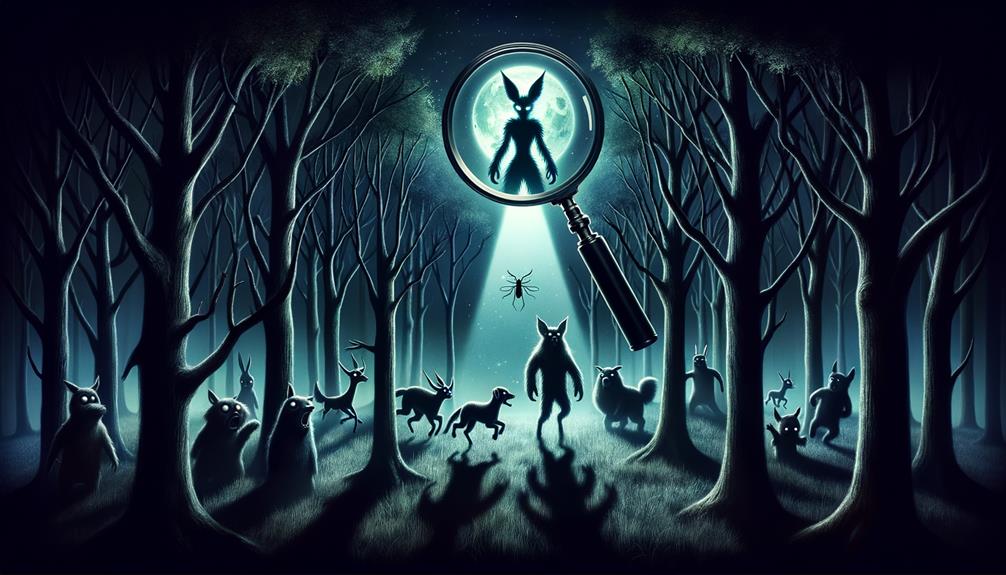The Chupacabra mystery is an intriguing tale that has its roots in Puerto Rican folklore and has since gained international attention. Picture a small, scaly creature with terrifying red eyes – that's the Chupacabra for you! Its unique attributes have sparked fear and curiosity in people around the world. Some even attribute otherworldly or magical powers to this creature.
Yet, many of its supposed traits can be reasonably explained through science. For instance, the creature's described features often match those of known predators like coyotes. Notably, the notorious livestock deaths linked to Chupacabras could very well be the work of ordinary diseases or parasites.
Texas, known for a flurry of sightings in the early 2000s, provides more insight into this mystery. However, the legend continues to thrive. It's easy to see that our interest in the Chupacabra goes beyond a mere curiosity. It has become a cultural symbol that begs for more investigation.
When you delve deeper into this legend, you'll find that the reality is often less extraordinary than it first appears. There's a tendency to lean towards supernatural explanations when, in fact, the truth could be far more ordinary. The Chupacabra mystery is an excellent example of this.
Origin of the Chupacabra Legend
The Chupacabra legend, a tale that has intrigued many over the years, originates from the folklore of Puerto Rico in the late 1900s. The creature, as per the stories, stands about 3-4 feet tall, is covered in scales, has sharp teeth and eyes that glow. The stories about this creature started to spread around the mid-1990s, with people claiming to have seen this strange beast with a taste for livestock blood.
What's interesting is that this creature was believed to have extraordinary abilities. It could, for example, jump incredible heights and distances. The idea of this creature, with its terrifying physical attributes and unbelievable abilities, undoubtedly played a part in cementing its place in folklore.
The Chupacabra legend, as far as my research goes, appears to be a cultural phenomenon. It's a myth born from fear and uncertainty, kept alive by vivid eyewitness accounts. This intriguing tale has held the attention of many for decades.
The Chupacabra Phenomenon Spreads
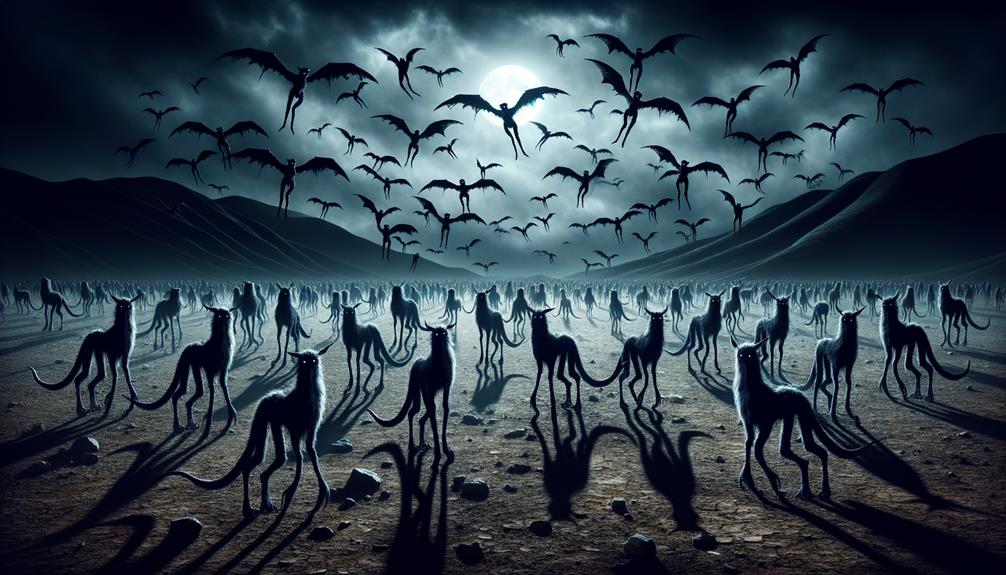
Focusing on the Chupacabra phenomenon, it's really cool to see how stories of this creature have spread across different cultures all over the world. There's no one-size-fits-all when it comes to what this creature supposedly looks like. Some people swear they've seen Chupacabras with wings or even shape-shifting ones, which just adds to the mystery. And then there are those who believe that these creatures might be from outer space or have supernatural powers, which just makes the legend of the Chupacabra even more popular. You can see this in how often the creature pops up in movies, TV shows, and internet memes.
Origins of the Legend
The Chupacabra, a legend that was born in the late 20th century primarily in Puerto Rico, quickly caught the attention of many around the globe. The first reports of this strange creature started popping up in the mid-90s, and soon enough, stories of livestock attacks and peculiar creature sightings had the local folks both intrigued and frightened.
Let's talk about what this creature looked like, according to these accounts:
- It was about 3-4 feet tall. Imagine bumping into something that size in the dark – quite unnerving, wouldn't you say?
- The creature reportedly had scaly skin. Scientists have tried to rationalize this feature, but so far, no explanation has really hit the mark.
- It had sharp fangs and glowing eyes – elements that only added to the eerie narrative of these attacks.
- Its ability to jump high and far was another strange ability that made people scratch their heads in wonder.
These unusual characteristics quickly turned the Chupacabra from a local tale into a worldwide sensation.
Sightings and Evidence
The Chupacabra's physical traits certainly piqued interest, but the rise in sightings and the mounting evidence really took its legend far beyond the confines of Puerto Rico. As news of this vampiric beast spread to different countries, people's anxieties escalated. The creature's descriptions varied wildly, with some saying it had wings or could change form, adding to theories of its alien or supernatural roots. The intrigue surrounding the Chupacabra grew with the spread of pictures and footage on the internet, helping to cement its place in popular culture. Interesting to point out, no matter the differing stories, the shared element was the mix of fear and fascination this creature stirred, showing just how potent its legend had become.
Decoding Scientific Explanations

Let's dive into the mystery of the Chupacabra. Scientists and wildlife specialists have put forth some logical explanations that link the puzzling deaths of livestock to everyday predators and illnesses, rather than an imaginary creature. Here's what they propose:
- A lot of the reported cases could be chalked up to familiar predators like coyotes or wild dogs, which might be misidentified due to panic or false information.
- The eeriness of carcasses appearing drained could actually be due to diseases or parasites, not some mystical phenomenon.
- News coverage and the power of suggestion can incite a collective frenzy, which helps the Chupacabra legend spread.
- Everyday occurrences might be misunderstood, adding to the mystery.
While the allure of the Chupacabra is rooted in its mystery, having a handle on the scientific explanations can help break down fears and myths.
The Texas Chupacabra Sightings
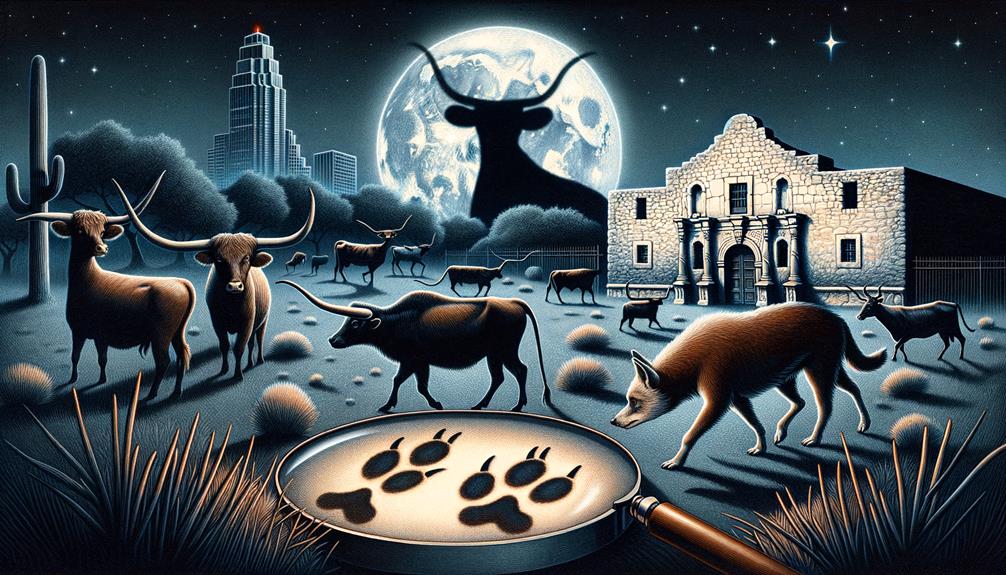
Shifting gears from the broad scientific angles, let's zoom into the fascinating chapter of the Chupacabra sightings in Texas during the early 2000s. This period saw Texas emerge as a hotbed for such sightings, adding a twist to the enigma of this elusive creature. It was not uncommon for local farmers to encounter mysterious livestock deaths, which they often blamed on the Chupacabra. However, scientists were quick to point out that coyotes were likely the real predators. Despite this rational explanation, the Chupacabra legend found a foothold in Texas, becoming a staple in local folklore.
Here's the lowdown:
| What Happened | Details |
|---|---|
| When and Where | Texas, early 2000s |
| What They Look Like | Large, hairless, scaly beings |
| Who Suffered | Livestock |
| What Scientists Say | Probably coyotes |
| Cultural Significance | Now a key part of Texas folklore |
This particular period in Texas history certainly added a layer of intrigue to the myth of the Chupacabra.
The Chupacabra in Popular Culture
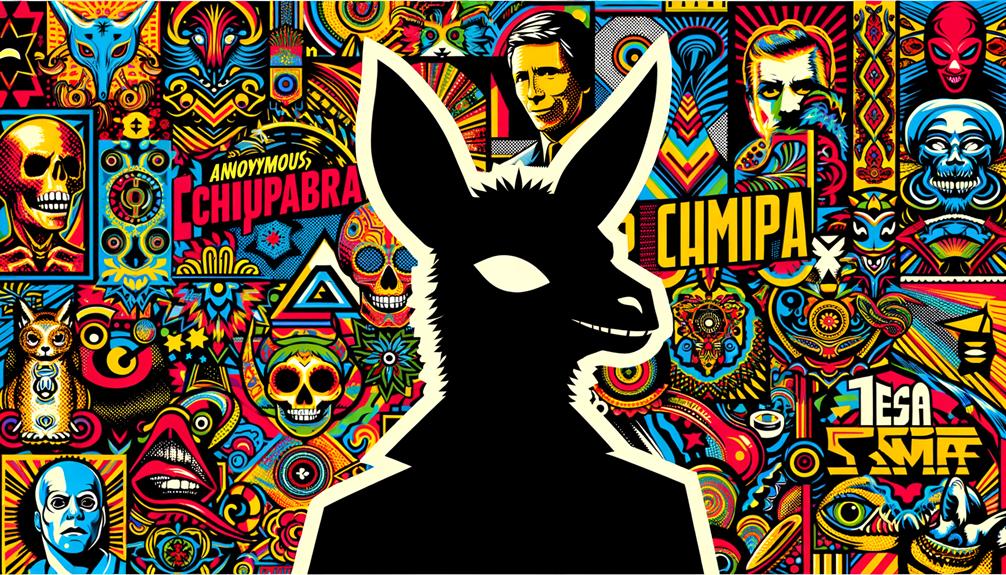
The Chupacabra has really made its mark in popular culture. This mystifying beast has inspired the creation of terrifying monsters in films like 'Species' and 'Alien', designed by H.R. Giger. Isn't it fascinating how a mythical creature can stir up such deep-seated fears, yet also inspire our curiosity?
- The Chupacabra has definitely found its place in pop culture, evolving from a spooky monster to a beloved icon.
- Its impact isn't just limited to Hollywood—it's made waves across all sorts of media.
- The Chupacabra legend, often linked with aliens or lab escapee stories, only adds to the enigma surrounding this creature.
- Its presence in pop culture has certainly played a big part in keeping the Chupacabra legend alive and kicking.
Basically, the Chupacabra continues to be a fascinating figure. The intrigue around it is kept alive by the various ways it's depicted in popular culture.
Enduring Legacy of the Chupacabra
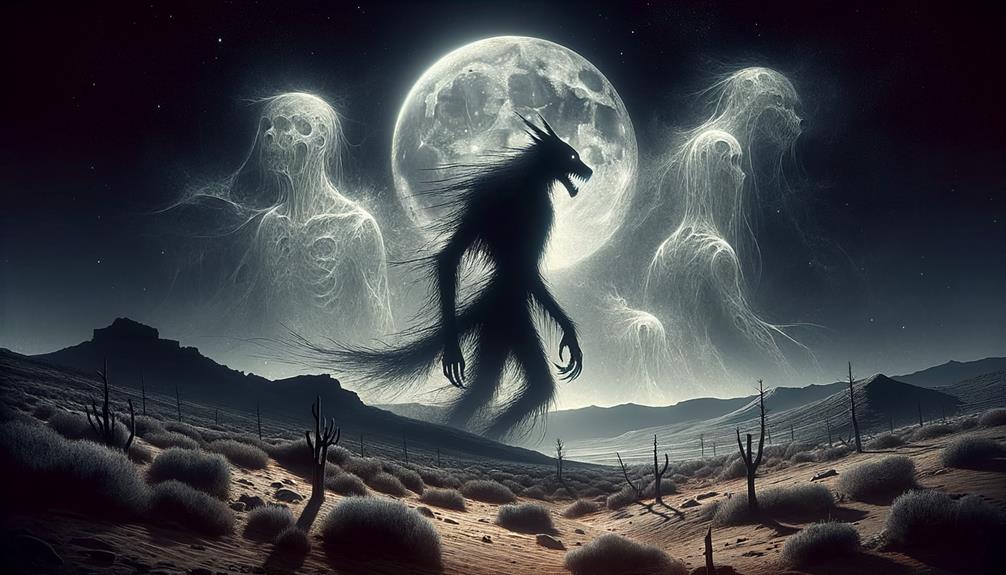
The enduring legacy of the Chupacabra has always piqued my interest. It's quite remarkable that a creature, first surfaced in the 90s in Puerto Rico, continues to instill fear and attract attention globally. So, why not join me as we delve into the origins of its folklore, its role in pop culture, and the attempts by science to unravel the mystery behind this creature?
Origins of the Legend
Born amidst the greenery of Puerto Rico in the 90s, the Chupacabra's legend struck a chord with the public right away. Picture a creature standing 3-4 feet tall with scaly skin, sharp teeth, and glowing eyes, said to have an odd preference for the blood of farm animals. It didn't take long for this creature to take center stage in the study of animals whose existence hasn't been proven yet, with its reputation growing thanks to its unique characteristics:
- A never-ending craving for blood.
- The power to jump extraordinary heights and distances.
- A terrifying look that would scare anyone who comes across it.
- A liking for farm animals, leaving behind a series of lifeless, bloodless bodies.
Even though science attributes these happenings to predators we already know of, the mystery around the Chupacabra's existence still holds a certain fascination.
Impact on Popular Culture
The Chupacabra isn't just a myth anymore; it's made its way into all sorts of media and left a lasting impression on popular culture. This creature, known for its eerie red eyes, has filled Latin America with a mix of fear and intrigue, blurring the line between the world of myths and reality. People can't seem to get enough of it, with its mysterious allure sparking interest in everything from books to films, ensuring its ongoing relevance. El Chupacabra, despite the skepticism it faces, continues to be a significant topic in cryptozoology, keeping debates alive and audiences hooked. Its creepy reputation and enigmatic nature go beyond just classic folklore, turning El Chupacabra into a cultural symbol. Its impact guarantees that the Chupacabra, a key figure of speculation and curiosity, will remain a staple in the realm of urban legends.
Scientific Explanations Explored
Pulling aside the curtain of folklore that surrounds the Chupacabra, scientists have given us more down-to-earth explanations for the strange happenings often linked to this mysterious beast. Instead of a terrifying creature, they propose:
- The deaths of farm animals, regularly attributed to the Chupacabra, might just be the actions of known predators like coyotes or stray dogs.
- The baffling instances of animal mutilation and puncture wounds could be connected to natural environmental factors, not a cryptic beast.
- The absence of any solid Chupacabra evidence strengthens the idea that this creature only exists in myth.
- The Chupacabra could be a creation of our fear of the unknown, an illusion birthed by cultural stories.
In this way, a scientific perspective encourages us to question the reality of the Chupacabra's existence, replacing fear with insight.
Frequently Asked Questions
Has a Chupacabra Been Found?
Well, to be straightforward, we haven't found a real chupacabra just yet. You may have heard countless stories of this mythical creature's sightings, but science begs to differ. Instead, these 'chupacabras' are often identified as already known animals, frequently canids, that are afflicted with a skin disease called mange.
What Does Chupacabra Mean in Spanish?
You know, when you translate 'Chupacabra' from Spanish, it intriguingly means 'goat-sucker'. This peculiar name comes from age-old tales about a bizarre creature that supposedly hunts livestock, particularly goats, and sucks their blood dry. It's a captivating snippet of cultural folklore that continues to intrigue us.
What Is the Chupacabra Disease in Coyotes?
Ever wondered about the so-called Chupacabra disease that affects coyotes? Well, it's actually a skin infection known as sarcoptic mange. This nasty condition results in significant hair loss, skin sores, and extreme itching. It's not just a physical ailment, either. It can change the behaviour of coyotes, making them more unpredictable and likely to go after livestock.
Do Chupacabras Live in Texas?
While there's a lot of local lore around it, we don't have any solid evidence to confirm that Chupacabras actually live in Texas. The reported sightings might just be predators that have been mistaken for Chupacabras, like coyotes, for instance. It's a fascinating tale, no doubt, but as it stands, it's still just a story without concrete proof.

